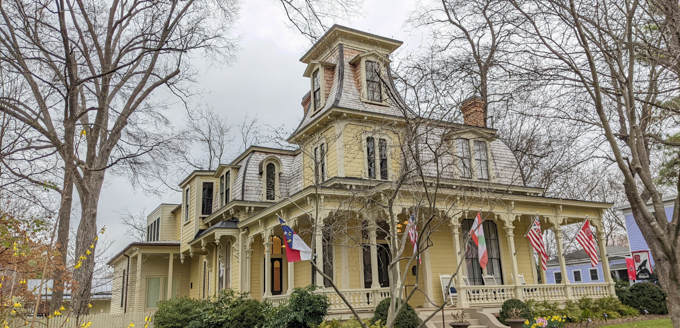
Preservationists: An Overview of Austin’s Historic Sites
The city of Austin, Texas is a treasure trove of history and culture. For history buffs and preservationists, there are a wealth of sites and buildings to explore. From the state capitol to the Driskill Hotel, Austin is filled with unique and fascinating historic buildings and homes.
Preservationists have long been a major part of the city’s identity. In the early 20th century, the Texas Historical Commission was formed to protect and preserve Austin’s historic sites. Since then, organizations such as the Austin Heritage Society and Austin Preservation Alliance have taken on the responsibility of preserving the city’s historic buildings.
The Texas State Capitol is undoubtedly the most iconic of Austin’s historic sites. Built in the late 19th century, the State Capitol is a classic example of neoclassical architecture and is the oldest continuously operating state capitol in the United States. The State Capitol’s grounds feature a variety of monuments and memorials, including the Texas Vietnam Veterans Memorial.
For history buffs and preservationists, the Driskill Hotel is another must-see site. Built in 1886, the Driskill is one of the oldest hotels in Texas and is a beloved fixture of downtown Austin. The hotel is home to a variety of art and artifacts, including a large collection of vintage photos and original furnishings. The Driskill Hotel also has a reputation for being one of the most haunted sites in the city.
Another great spot for history buffs is the Governor’s Mansion. Built in 1856, the Governor’s Mansion is the oldest continuously inhabited home in Texas. With its distinctive red brick exterior and stunning magnolia trees, the Governor’s Mansion is a favorite of locals and visitors alike. The mansion is open for tours and can offer a unique insight into the history of the city.
The University of Texas at Austin is also home to a number of historic sites. The campus is home to buildings from the 1800s, including the Main Building and the Tower, which offer stunning views of the city. The university also has a number of museums and galleries, including the Blanton Museum of Art and the Harry Ransom Center.
Finally, for those interested in local history, the Bullock Texas State History Museum offers a wealth of information and artifacts. The museum features interactive exhibits and audio-visual presentations that bring Texas history to life.
Austin is a city filled with incredible historic sites, each with its own unique story. For history buffs and preservationists, these sites provide an invaluable opportunity to explore the past and learn more about the city. From the State Capitol to the Governor’s Mansion, Austin is a city with a rich and vibrant history.
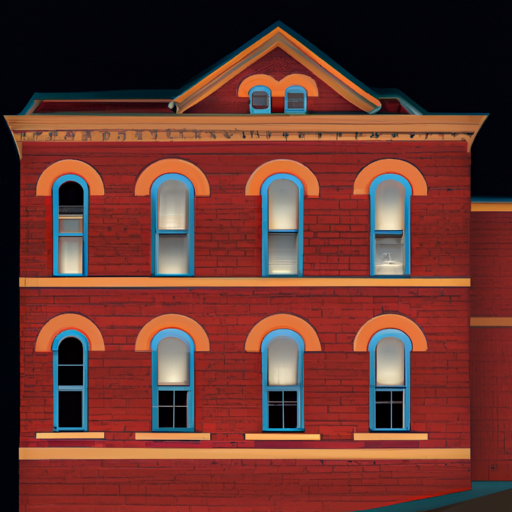
A Look into Austin’s Most Iconic Buildings
The city of Austin is a vibrant community filled with a rich history and culture. From the State Capitol to the University of Texas campus, there are many iconic buildings and homes that date back to the 1800s. For history buffs and preservationists, Austin is a treasure trove of architectural gems that are worth exploring.
The Texas State Capitol is one of the most iconic buildings in Austin, and it is a must-see for any history enthusiast. Built in 1888, the Capitol building is one of the most recognizable and well-preserved examples of 19th-century architecture in the city. The building is a National Historic Landmark, and it is the seat of the state government, making it a significant symbol of Texas history.
The Driskill Hotel is another one of Austin’s most iconic buildings. Built in 1886, the hotel is a stunning example of 19th-century Romanesque Revival architecture. The Driskill offers a unique glimpse into the city’s past, with its antique furnishings and grand marble staircase. The hotel is also located in the heart of downtown Austin, making it a great place to stay and explore the city.
The Governor’s Mansion is another one of Austin’s most historic homes. The mansion, which was built in 1856, is the oldest and most iconic house in the city. It is the official residence of the governor of Texas, and it is a National Historic Landmark. The mansion is open to the public for guided tours, giving visitors a chance to explore the house’s elegant interiors and beautiful gardens.
The Congress Avenue Bridge is one of the most iconic structures in Austin. The bridge, which was built in 1910, is a beautiful example of early 20th-century architecture. The bridge spans the Colorado River and is a popular spot for watching the city’s famous bat colony. The bridge also offers stunning views of downtown Austin, making it a great place for photographers to capture the city’s beauty.
The O. Henry Museum is another important piece of Austin’s history. The museum was built in 1909 and is dedicated to the life and works of William Sydney Porter, better known as O. Henry. The museum offers visitors a chance to explore the author’s life and works, as well as an opportunity to view some of his original manuscripts.
The University of Texas campus is home to some of Austin’s most iconic buildings. The university’s campus is a living museum, with its iconic landmark towers, the Main Building and the Tower. The Main Building stands out for its French Renaissance architecture, while the Tower is a stunning example of Art Deco architecture. The campus is also home to many other historic buildings, including the Littlefield Fountain, the Old Main Building, and the Texas Union.
These are just a few of the many iconic buildings and homes that make Austin such a unique and vibrant city. From the State Capitol to the Governor’s Mansion, Austin has a long and rich history that is worth exploring. Whether you are a history buff or preservationist, there are plenty of historic sites to visit in Austin.
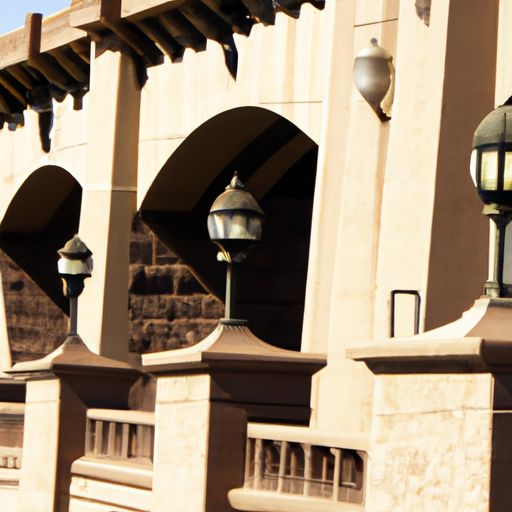
Exploring the History of Austin’s Historic Homes and Buildings
Austin, Texas is a city that’s steeped in history, and its many historic homes and buildings are a testament to its storied past. From the Governor’s Mansion to the Texas State Capitol, the city has a variety of architectural gems to explore. Whether you’re a history buff or a preservationist, there’s something for everyone to enjoy. Here’s a guide to some of the most historic homes and buildings in Austin.
Start your exploration at the Governor’s Mansion, which was built in 1856 and is the oldest continually inhabited residence in Texas. The mansion is a classic example of Italianate architecture and is listed on the National Register of Historic Places. While the home is not open to the public, you can still enjoy the beautiful grounds, which are open to the public from sunrise to sunset.
Next, visit the Texas State Capitol, which is located downtown and is an iconic symbol of Austin’s history. The building was constructed in 1888 and is a masterpiece of late 19th century architecture. It is the largest state capitol in the country and is open to the public for tours.
After that, visit the O. Henry House Museum, which was the home of the famous writer and Austin resident O. Henry. The house, built in 1892, was the setting for many of his stories, and it has been preserved to look exactly as it did in the 19th century. The museum offers guided tours and is an excellent way to explore the life and works of O. Henry.
If you’re interested in the history of Austin’s African-American community, then visit the George Washington Carver Museum and Cultural Center. The museum is devoted to the life and work of George Washington Carver, a prominent African-American scientist and inventor. It features a variety of exhibits, including an interactive history of African-American life in Austin.
Finally, be sure to explore the Driskill Hotel, which is one of Austin’s oldest and most iconic hotels. The building was constructed in 1886 and is an excellent example of Romanesque Revival architecture. The hotel is open to the public and offers a variety of tours and events throughout the year.
There’s no shortage of historic homes and buildings to explore in Austin, and these are just a few of the many options. Whether you’re a history buff or a preservationist, there’s something for everyone to enjoy. From the Governor’s Mansion to the Driskill Hotel, Austin is full of unique and interesting sites that provide a glimpse into the city’s past. So, what are you waiting for? Get out there and explore the history of Austin’s historic homes and buildings!

The Legacy of Austin’s Historic Homes and Buildings
The historic homes and buildings of Austin, Texas are a testament to the city’s rich and unique history. From the Governor’s Mansion to the French Legation, these landmarks represent a bygone era of Austin that is still alive today. For the history buff or preservationist, the chance to explore and learn about the stories behind these sites can be a truly remarkable experience.
At the center of Austin’s history is the Governor’s Mansion. Built in 1856, this iconic building has served as the home of each Texas governor since 1856 and has become a symbol of the state’s democracy and heritage. Tourists can visit the mansion and take in the stately architecture and lush grounds, learning about the history and legacy of the building and the people who have called it home.
Another important landmark in Austin is the French Legation. Built in 1841, this two-story adobe building is the oldest structure in the city and has served as a diplomatic residence, a state office building, and a private residence. Visitors can explore the building and learn about its role in Austin’s history, as well as the fascinating story of its namesake, the first French ambassador to Texas.
For those looking to learn more about Austin’s architectural history, the O. Henry Home and Museum is a must-see. Built in 1855, the home was once owned by the beloved American author O. Henry and is now a museum dedicated to his life and work. Visitors can explore the home and the grounds, learning about the author’s life and the legacy of his writing.
The Driskill Hotel is another iconic landmark in Austin. Opened in 1886, the hotel is one of the city’s oldest and most iconic buildings. Visitors can explore the grandiose lobby, take in the Victorian architecture, and learn about the building’s unique and fascinating history.
These are just a few of the many historic homes and buildings in Austin. From the Governor’s Mansion to the Driskill Hotel, these landmarks provide a glimpse into the city’s past and the stories behind them are truly remarkable. Whether you’re a history buff or a preservationist, these sites offer a unique and educational experience that will stay with you for years to come.
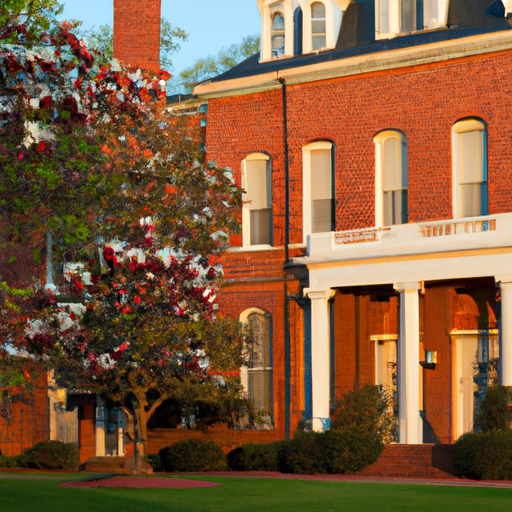
The Role of Preservationists in Preserving Austin’s Historic Architecture
The people of Austin, Texas have always had a deep appreciation for the city’s rich history. As the state capital, Austin is home to a number of important historic homes and buildings. From the Governor’s Mansion to the State Capitol to the Driskill Hotel, there are numerous examples of historic architecture in the city. But in order for these buildings to be preserved for future generations, the efforts of preservationists are key.
Preservationists are people who advocate for the protection of historic buildings and monuments. Through their work, they help to ensure that important architectural landmarks are not destroyed or neglected. In Austin, preservationists have been instrumental in the preservation of many of the city’s most iconic structures.
In the early 1990s, for example, preservationists successfully fought to save the historic Driskill Hotel from demolition. The hotel was originally built in 1886 and is considered to be the oldest operating hotel in the city. It is a beautiful example of late 19th-century architecture and was in danger of being torn down to make way for a modern high-rise. Thanks to the efforts of preservationists, however, the Driskill Hotel remains standing today.
Preservationists also played a role in the restoration of the Governor’s Mansion. The mansion was built in 1856 and is the oldest residence in the city. It has housed numerous Texas governors, including Sam Houston and George W. Bush. In 2008, the mansion underwent a major restoration project. Preservationists were instrumental in the effort, working to ensure that the building was restored to its original glory.
Preservationists have also been involved in the preservation of several other historic buildings in Austin. The Texas State Capitol, for instance, was built in 1888 and is considered to be one of the city’s most iconic landmarks. In 2009, a major restoration project was undertaken to restore the capitol to its original grandeur. Preservationists were involved in the effort and were instrumental in preserving the building for future generations.
Preservationists have had an important role to play in the preservation of Austin’s historic architecture. Through their tireless efforts, they have helped to ensure that many of the city’s most iconic buildings and monuments remain standing today. Their dedication to preserving the city’s history and culture should serve as an inspiration to all who appreciate the beauty and significance of Austin’s historic architecture.

Exploring the Architectural History of Austin’s Historic Sites
Austin, Texas is a city steeped in history. From its 19th century beginnings as the Republic of Texas’ capital to its modern day status as a vibrant city of culture and innovation, the city has a rich architectural history. From the grandiose Victorian mansions of the 19th century to the modern skyscrapers of the 21st, Austin is home to a variety of historic sites and homes for history buffs and preservationists alike.
The oldest building in Austin is the Old Bexar County Jail, which dates back to 1876. The three-story limestone structure is a testament to the city’s early architectural history. The jail is now a museum, showcasing its historic artifacts and original features, such as its barred windows, thick walls, and ironwork.
Another important architectural landmark in Austin is the Governor’s Mansion. Built in 1856, this grand Victorian mansion is the oldest Governors Mansion in the United States still in use. Today, the mansion is home to the Governor of Texas and serves as a museum showcasing the history of the mansion and the state of Texas.
The Texas State Capitol is another iconic landmark in Austin. The building was designed by renowned architect Elijah E. Myers and completed in 1888. The Capitol is constructed of pink granite and stands at a height of 302 feet. Inside, the building is adorned with intricate designs and artifacts from the state’s history.
The Driskill Hotel is another historic building in Austin. The hotel was originally built in 1886 by cattle baron Jesse Driskill and is one of the oldest operating hotels in the city. The hotel is known for its grand architecture, marble walls, and ornate fixtures, making it one of the most iconic hotels in Austin.
The Hyde Park Historic District is another essential stop for architectural history buffs. The district is home to a variety of historic homes, mansions, and buildings, all constructed in the late 19th and early 20th centuries. The district is home to some of the most beautiful homes in the city, some of which have been designated as historic landmarks.
The Paramount Theatre is another great site to explore Austin’s architectural history. Built in 1915, the theater is the oldest operating movie theater in Texas. Today, the theater is home to a variety of events, such as live concerts and film screenings.
The Driskill Hotel, the Texas State Capitol, the Governor’s Mansion, the Paramount Theatre, and the Hyde Park Historic District are just a few of the many historic sites and buildings in Austin. Exploring these locations is a great way for history buffs and preservationists to get a glimpse into the city’s architectural history. From grand Victorian mansions to modern skyscrapers, Austin is home to a variety of historic sites and homes that are sure to please any history enthusiast.
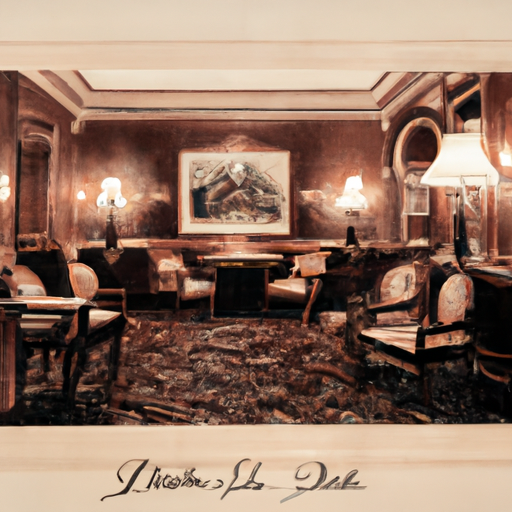
The Historic Sites of Austin: An Overview
The Historic Sites of Austin, Texas offer a unique window into the city’s long and storied past. Home to the Texas state capital since 1839, Austin has a rich and diverse history that is reflected in its many historic sites. From stately homes and iconic landmarks to unique theaters and archaeological sites, Austin’s historic sites are a must-see for history buffs and preservationists alike.
For those interested in the history of the state capital, the Capitol Building is a must-see. Built in 1888, the Capitol Building is the oldest standing state capitol in the nation. With its massive granite dome and numerous historical artifacts, the Capitol Building is a testament to the city’s past and present.
Another iconic landmark in Austin is the Driskill Hotel. Built in 1886, the Driskill is the oldest operating hotel in the city and one of the oldest in the state. The hotel is renowned for its historic architecture and opulent décor, and it is often used as a backdrop for films and television shows.
For those interested in Austin’s unique culture, the Paramount Theatre is an ideal destination. Located in downtown Austin, the Paramount Theatre has been a cultural institution since its opening in 1915. The theatre is known for its lively atmosphere and a long list of plays and musicals, making it one of the city’s most popular venues.
The Bremond Block Historic District is another must-see for history buffs. Located in downtown Austin, the Bremond Block is a collection of 19th-century homes built by the prominent Bremond family. Today, the homes are maintained by the National Trust for Historic Preservation and are open to the public.
For a look into Austin’s past, the Bullock Texas State History Museum is a great place to visit. The museum offers a comprehensive look at the history of Texas, including interactive exhibits, artifacts, and educational programs.
The Texas State Cemetery is another important historic site in Austin. This historic cemetery is home to the graves of prominent Texans, including former Texas governors and military heroes. The cemetery is a must-see for history buffs and offers a peaceful and contemplative atmosphere.
Finally, the Lower Colorado River Archaeological District offers a unique window into the city’s past. This archaeological district is home to a variety of Native American artifacts, including stone tools, pottery, and pictographs. The district offers visitors a unique glimpse into the history and culture of the region.
Austin is a city rich with history, and its many historic sites offer a unique window into the city’s past. From iconic landmarks to archaeological sites, Austin’s historic sites are a must-see for history buffs and preservationists alike.

Exploring the Importance of Preserving Austin’s Historic Sites
Exploring the importance of preserving Austin’s historic sites is a must for any history buff or preservationist. The city of Austin has some of the most historic homes and buildings in the United States and it’s important to recognize the cultural, historical and architectural value that each of these sites holds. Preserving these sites allows us to not only continue the story of Austin’s past, but also to ensure that the city will be able to tell its story for future generations.
Austin is home to a number of historic homes and buildings that have played a major role in the city’s history. From the majestic Governor’s Mansion to the iconic Texas State Capitol, these sites are a reminder of the city’s proud history. The Old Bakery & Emporium, the oldest commercial building in Austin, is a perfect example of the city’s rich heritage. Built in 1876, the building served as a bakery, general store, and later a printing facility. It is now an interactive museum that provides visitors with a glimpse into the city’s past.
Preserving these sites is essential to ensuring that future generations can appreciate the stories they tell. It is also important to recognize the impact that these sites have had on the city’s culture and identity over the years. The preservation of these sites helps to protect the city’s unique character and ensure that its history is not forgotten.
In addition to preserving the city’s historic sites, it is also important to recognize the importance of adaptive reuse. This process involves transforming a historic building into a modern, functional space. An example of this can be seen in Austin’s historic Seaholm Power Plant, which was converted into a vibrant art and tech district. This adaptive reuse project has allowed the city to maintain its historic charm while also creating a vibrant and modern area for visitors to explore.
Preserving Austin’s historic sites is an important part of the city’s history and identity. By recognizing the importance of these sites, we can ensure that future generations will continue to appreciate the stories and cultures that have shaped the city. Whether you’re a history buff or a preservationist, exploring and preserving Austin’s historic sites is a great way to show your appreciation for the city’s unique history and culture.



